Abstract
A theoretical model is used to study band formation by chemotactic populations of Escherichia coli. The model includes the bacterial response to attractant gradients, the chemotactic sensitivity of the bacteria to the concentration of the attractant, and population growth. For certain values of the parameters in the model, traveling bands of bacteria form and propagate with or without growth. Under specific growth conditions the band profile is maintained and the band propagates at constant speed. These predictions are in general agreement with the experiment results of J. Adler and earlier theoretical work by L. Segel and his collaborators. However, our theory differs in several important respects from the latter efforts. Suggestions are made for further experiments to test the proposed model and to clarify the nature of the processes which lead to band formation.
Full text
PDF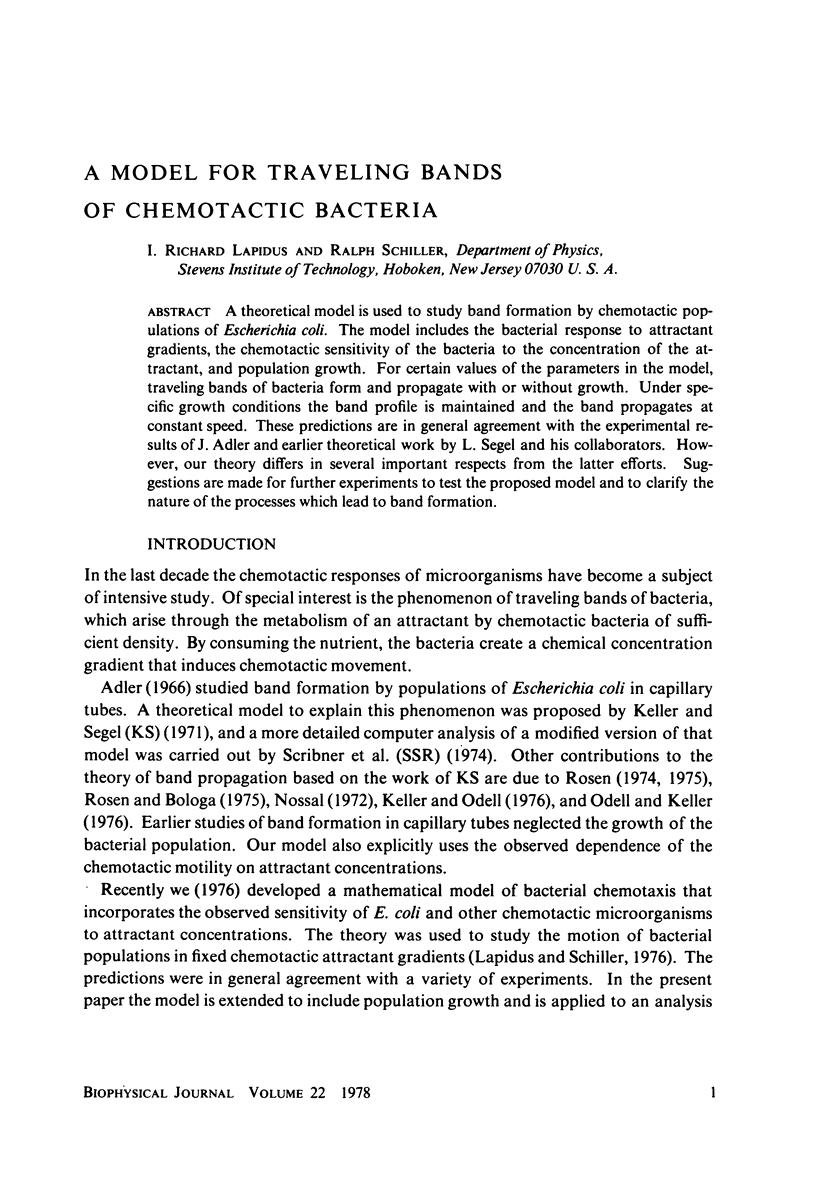
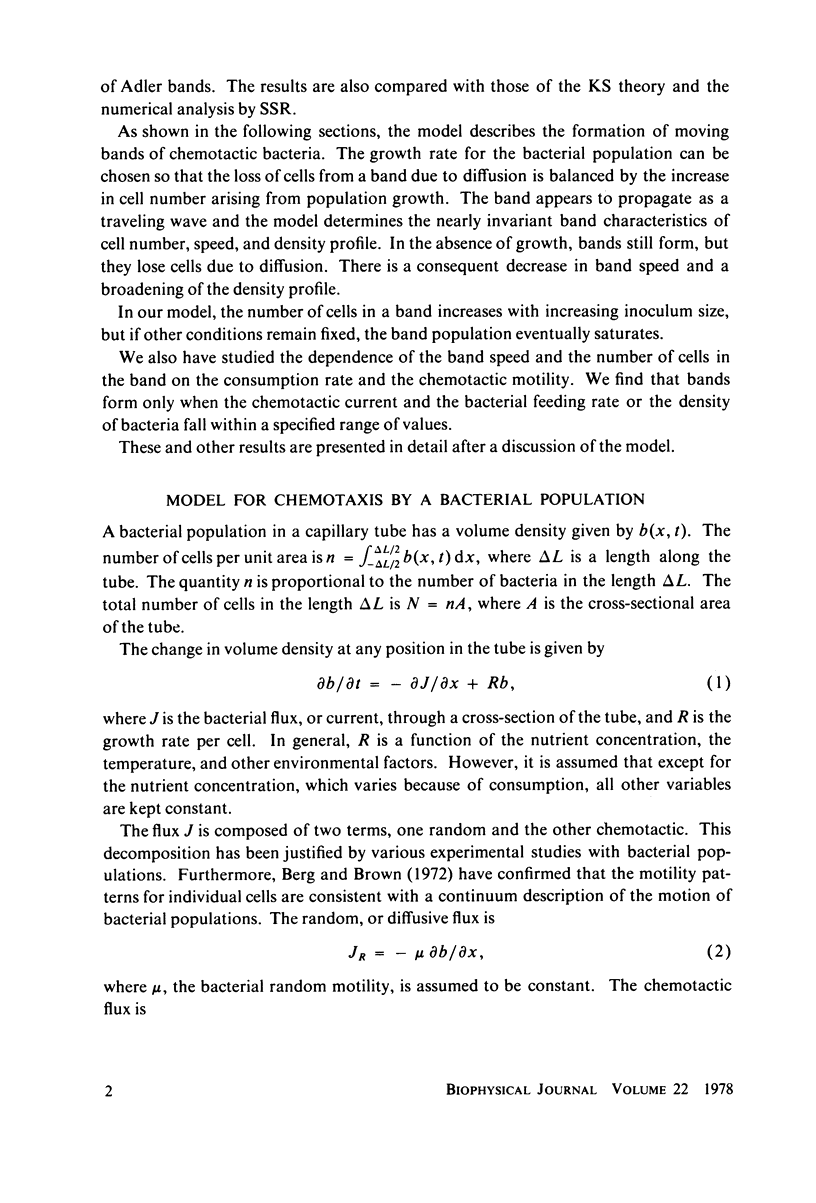
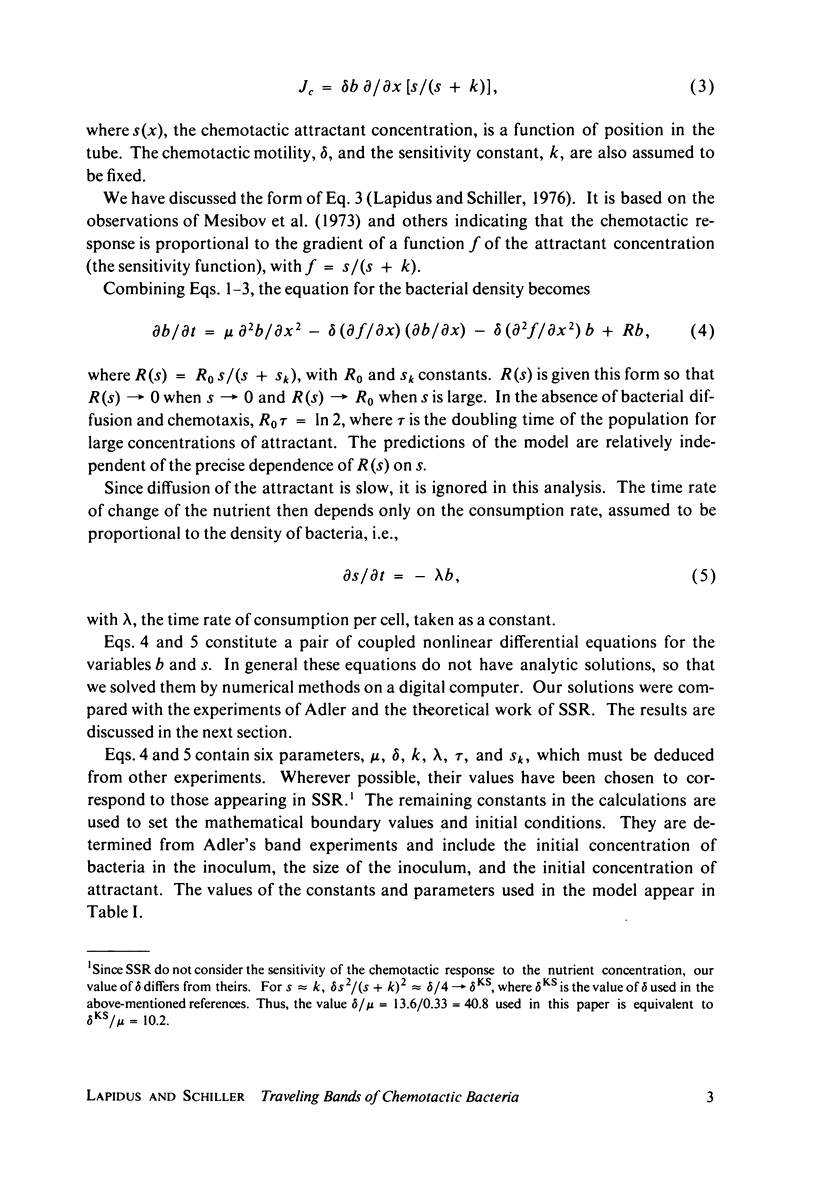
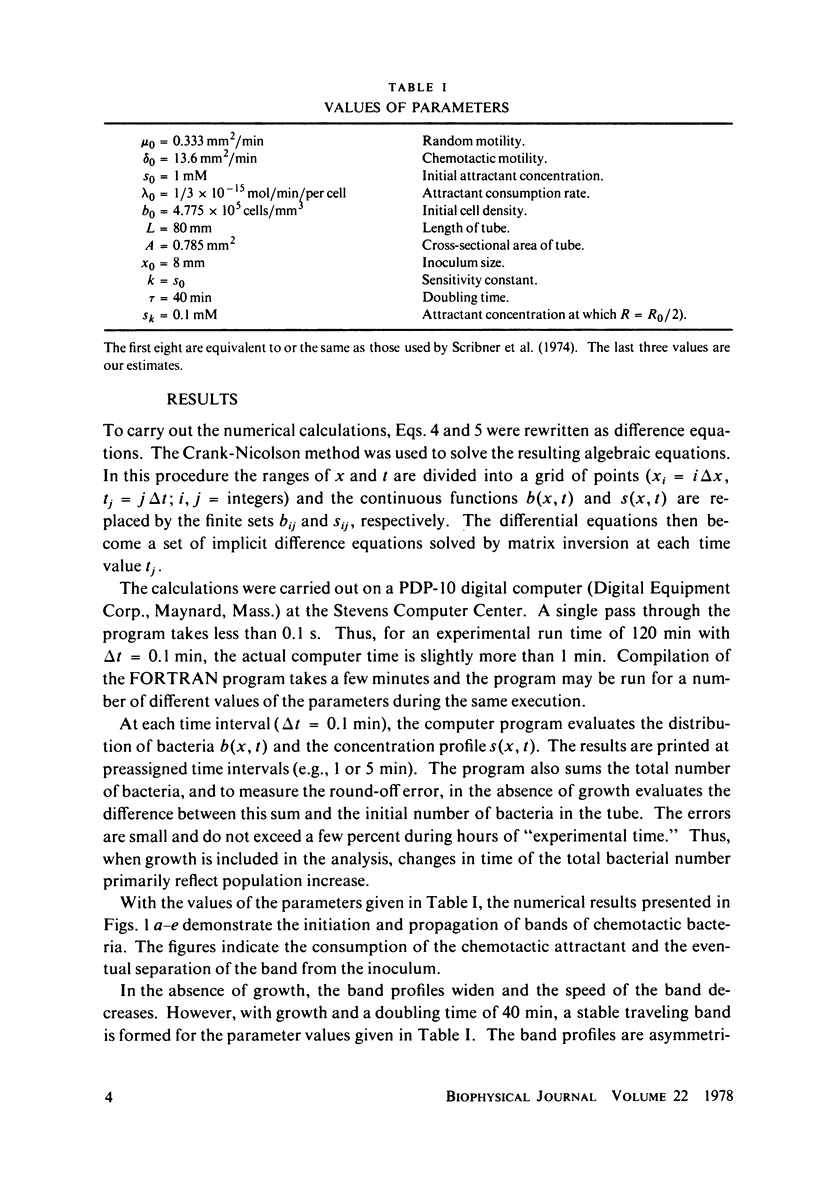
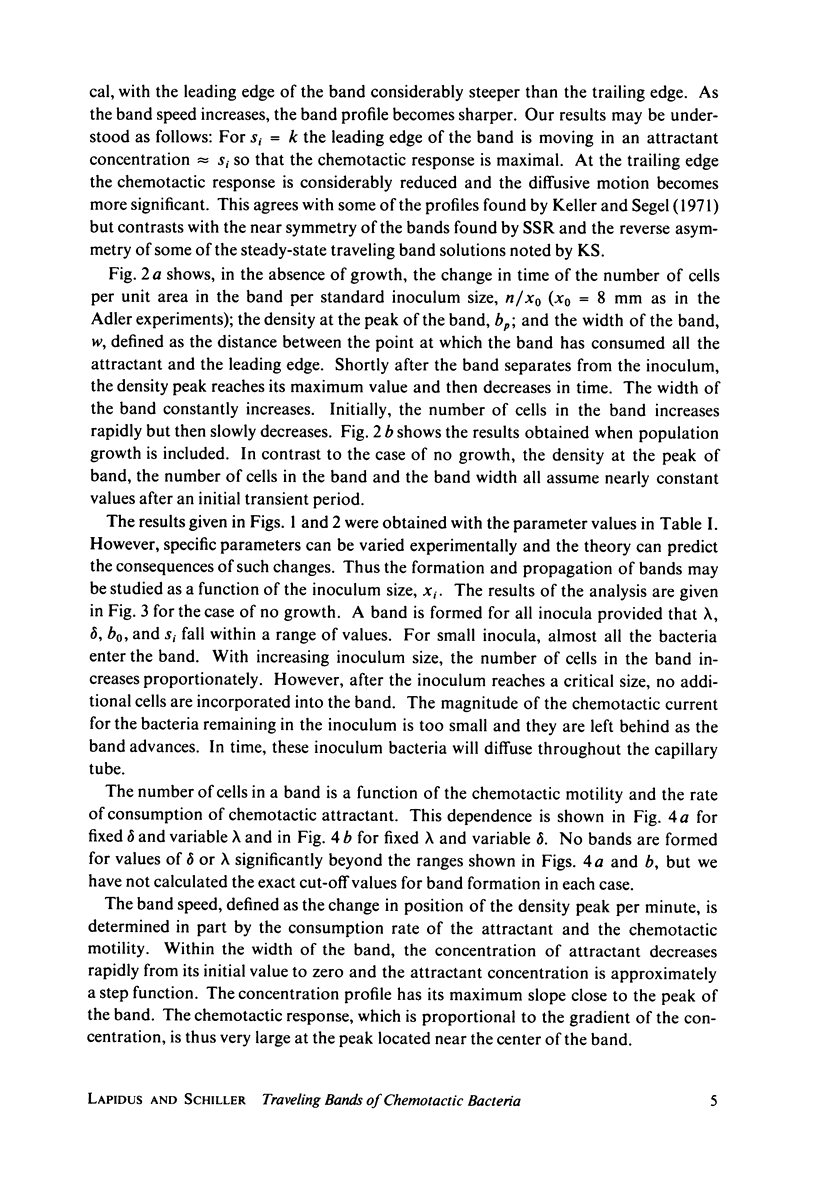
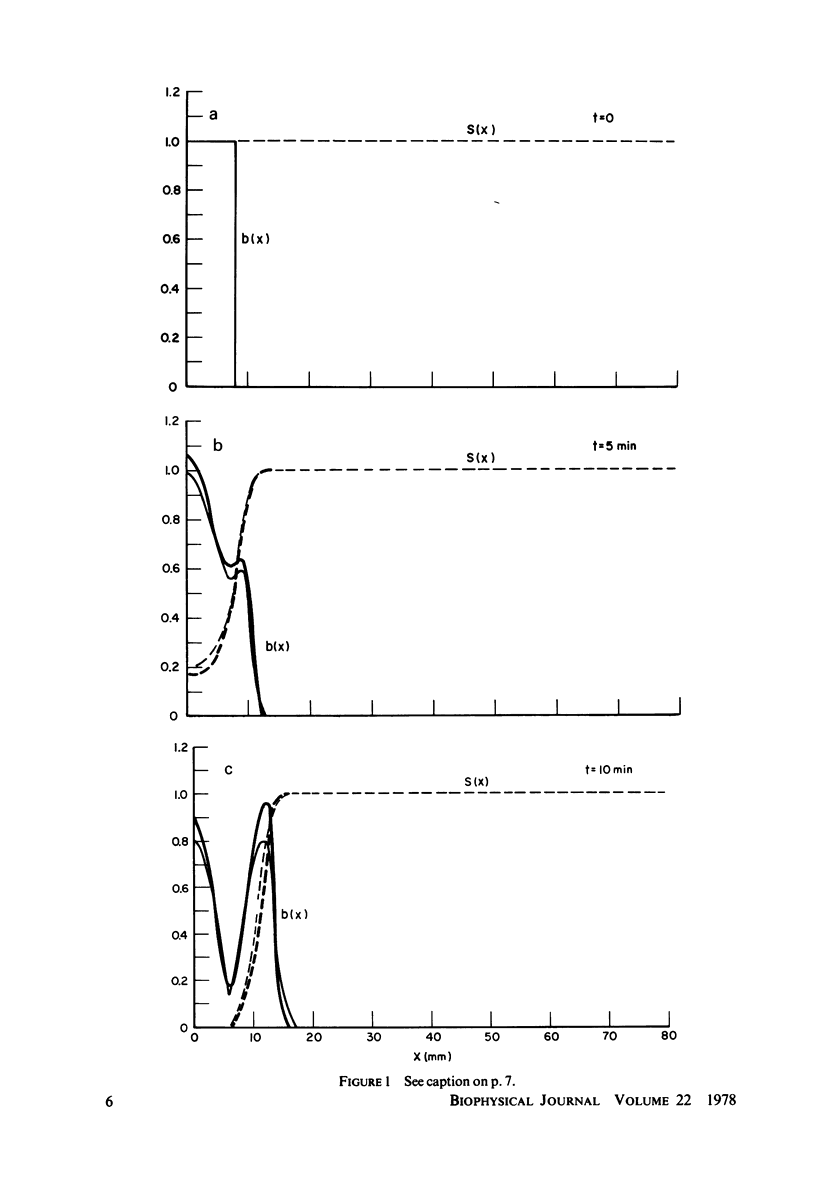
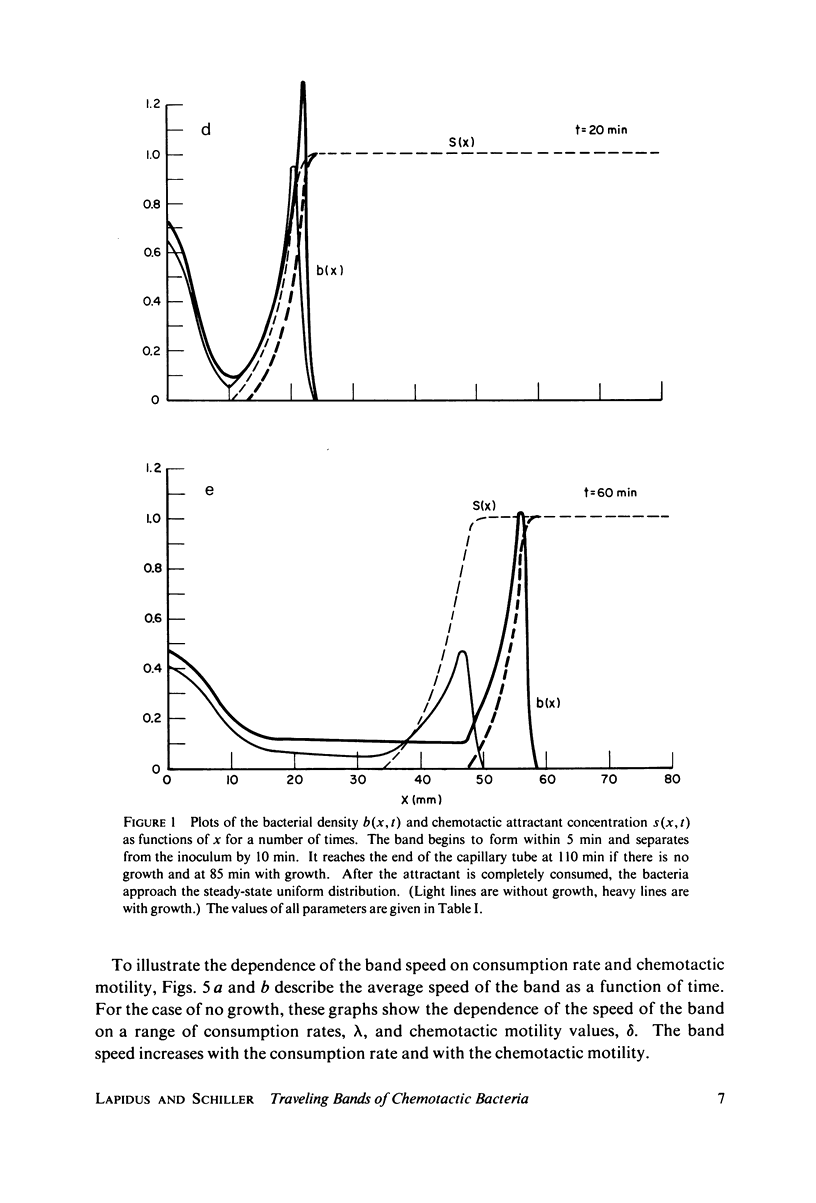
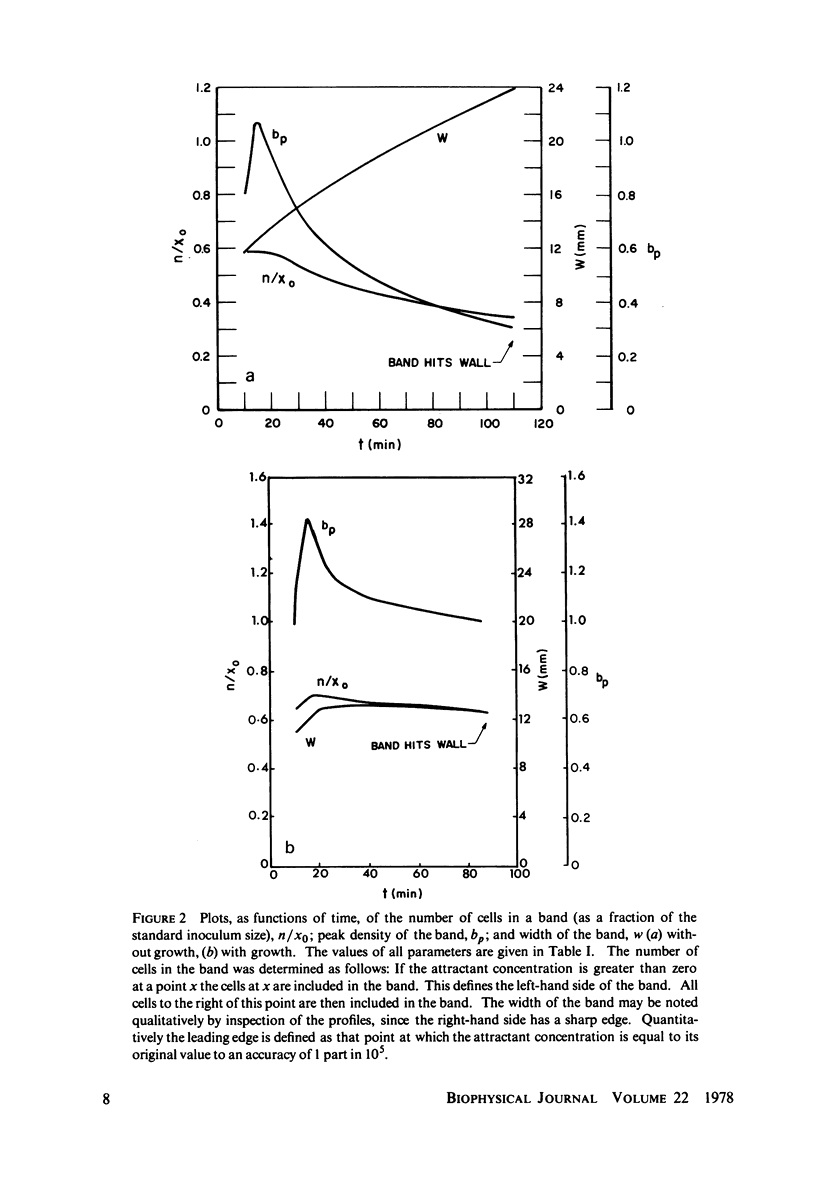
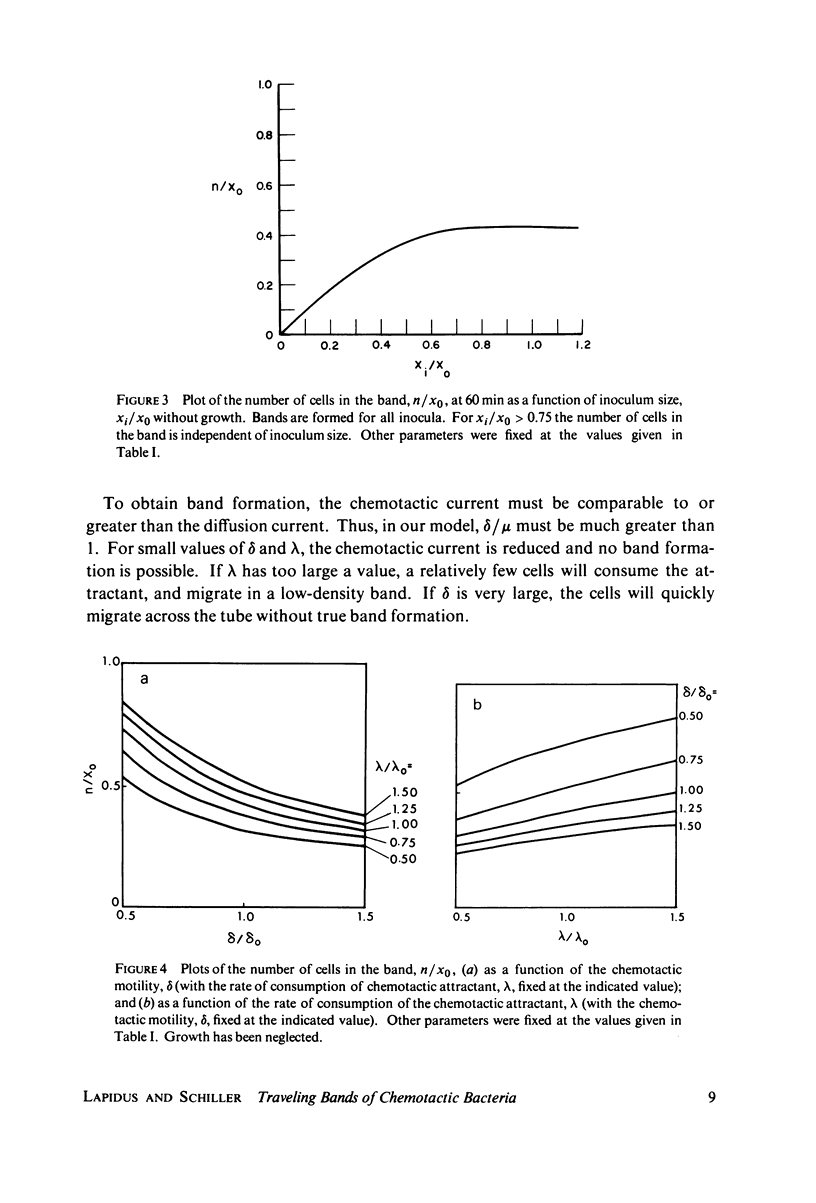
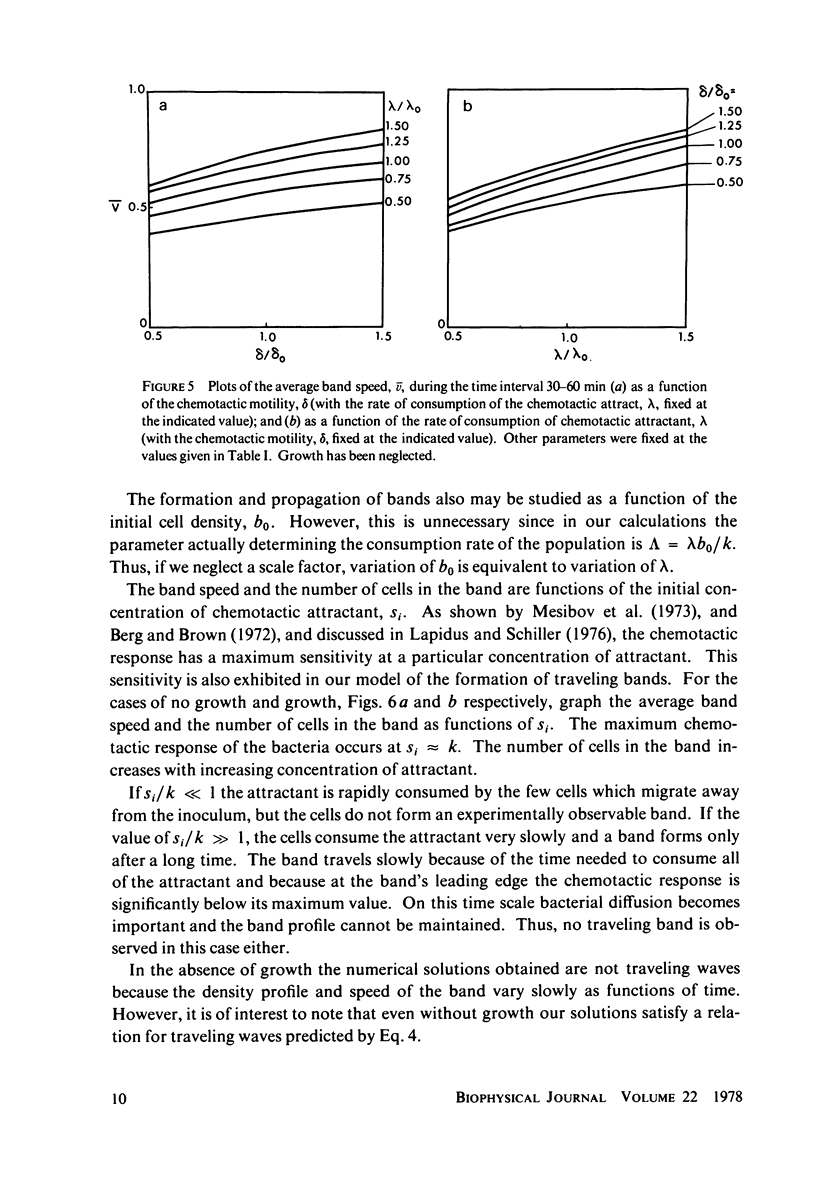
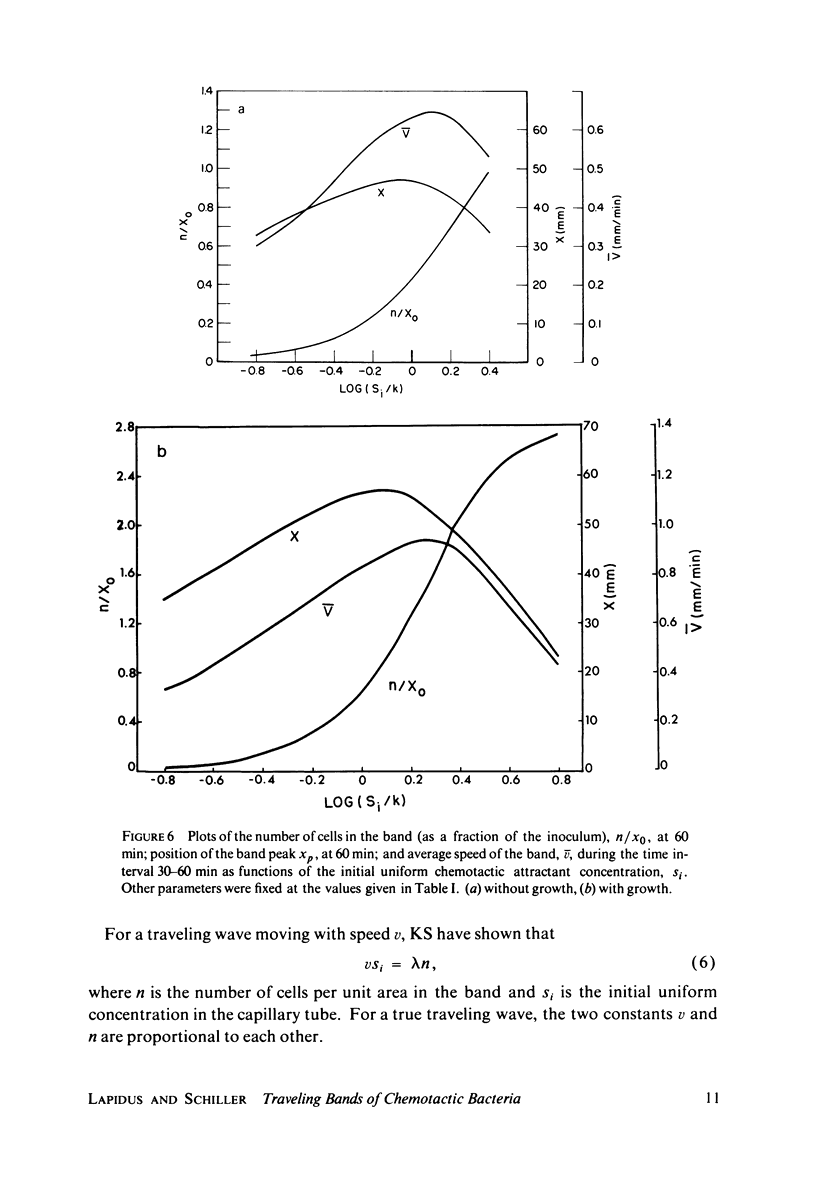
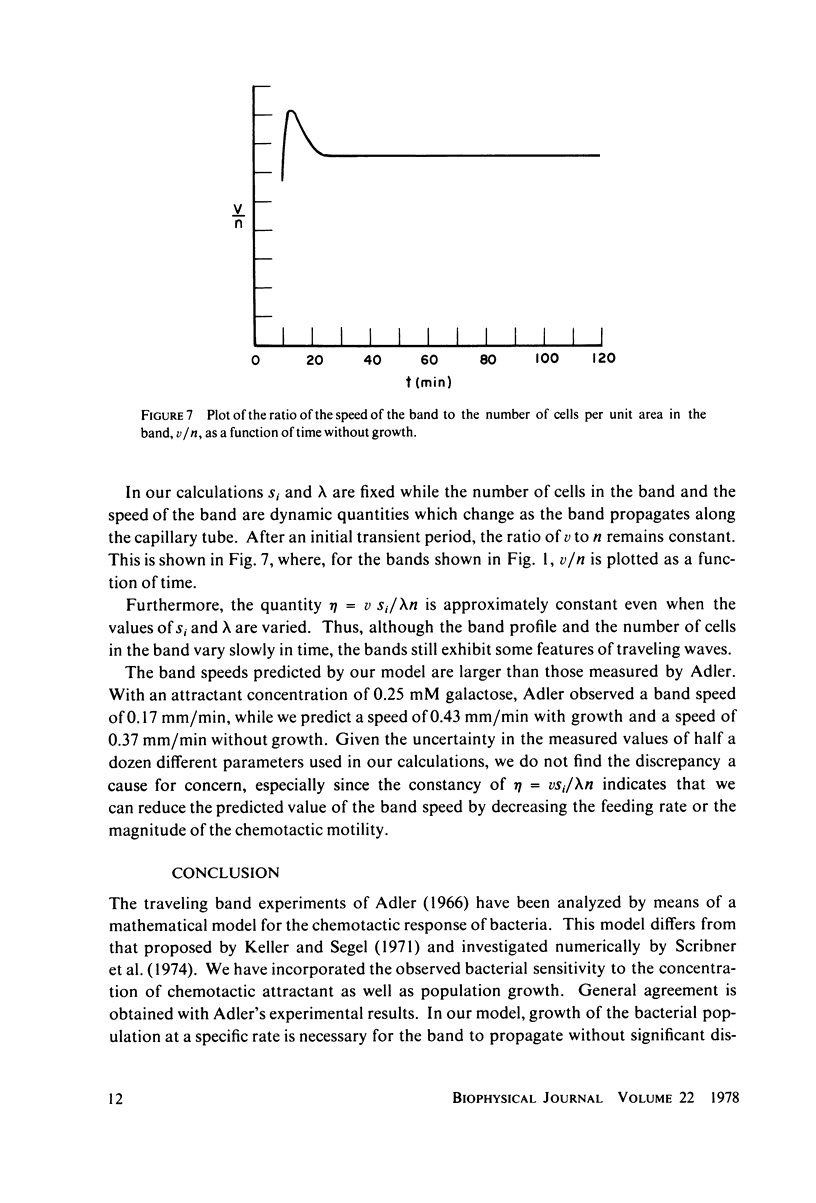
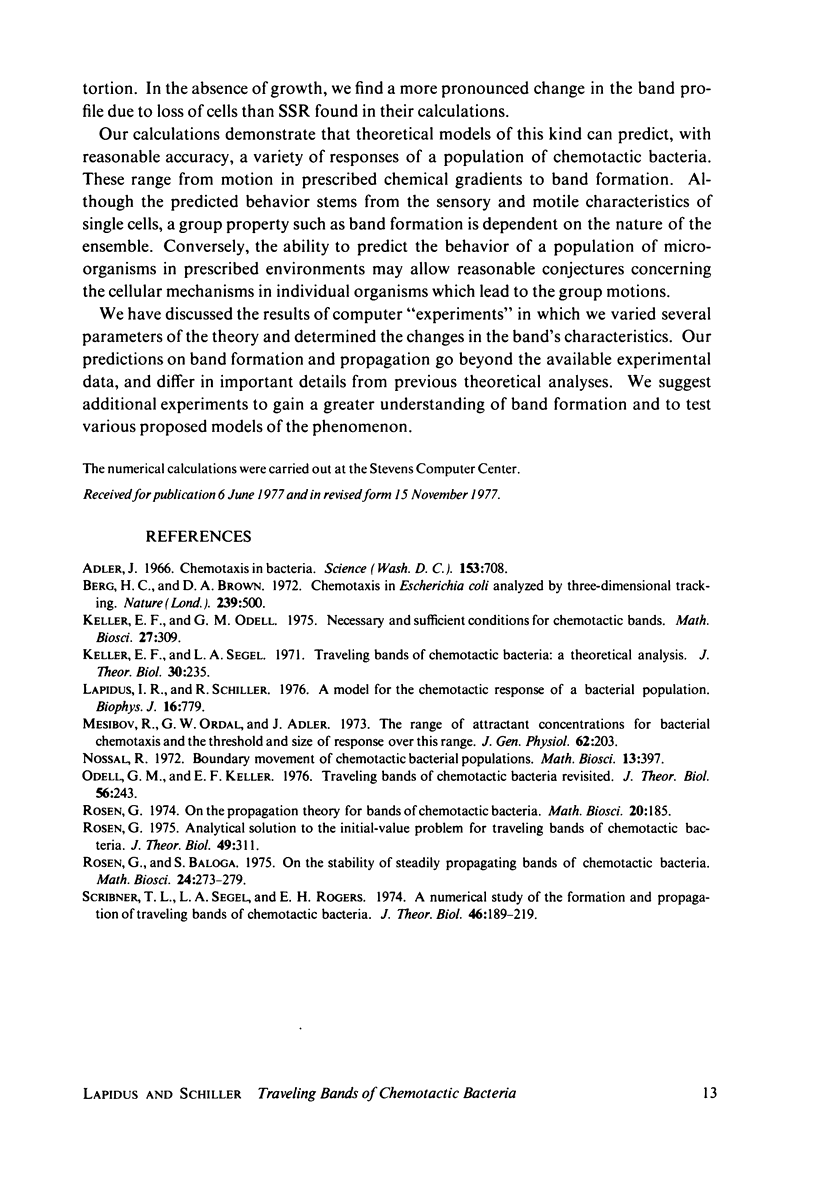
Selected References
These references are in PubMed. This may not be the complete list of references from this article.
- Adler J. Chemotaxis in bacteria. Science. 1966 Aug 12;153(3737):708–716. doi: 10.1126/science.153.3737.708. [DOI] [PubMed] [Google Scholar]
- Berg H. C., Brown D. A. Chemotaxis in Escherichia coli analysed by three-dimensional tracking. Nature. 1972 Oct 27;239(5374):500–504. doi: 10.1038/239500a0. [DOI] [PubMed] [Google Scholar]
- Keller E. F., Segel L. A. Traveling bands of chemotactic bacteria: a theoretical analysis. J Theor Biol. 1971 Feb;30(2):235–248. doi: 10.1016/0022-5193(71)90051-8. [DOI] [PubMed] [Google Scholar]
- Lapidus I. R., Schiller R. Model for the chemotactic response of a bacterial population. Biophys J. 1976 Jul;16(7):779–789. doi: 10.1016/S0006-3495(76)85728-1. [DOI] [PMC free article] [PubMed] [Google Scholar]
- Mesibov R., Ordal G. W., Adler J. The range of attractant concentrations for bacterial chemotaxis and the threshold and size of response over this range. Weber law and related phenomena. J Gen Physiol. 1973 Aug;62(2):203–223. doi: 10.1085/jgp.62.2.203. [DOI] [PMC free article] [PubMed] [Google Scholar]
- Odell G. M., Keller E. F. Letter: traveling bands of chemotactic bacteria revisited. J Theor Biol. 1976 Jan;56(1):243–247. doi: 10.1016/s0022-5193(76)80055-0. [DOI] [PubMed] [Google Scholar]
- Scribner T. L., Segel L. A., Rogers E. H. A numerical study of the formation and propagation of traveling bands of chemotactic bacteria. J Theor Biol. 1974 Jul;46(1):189–219. doi: 10.1016/0022-5193(74)90147-7. [DOI] [PubMed] [Google Scholar]


